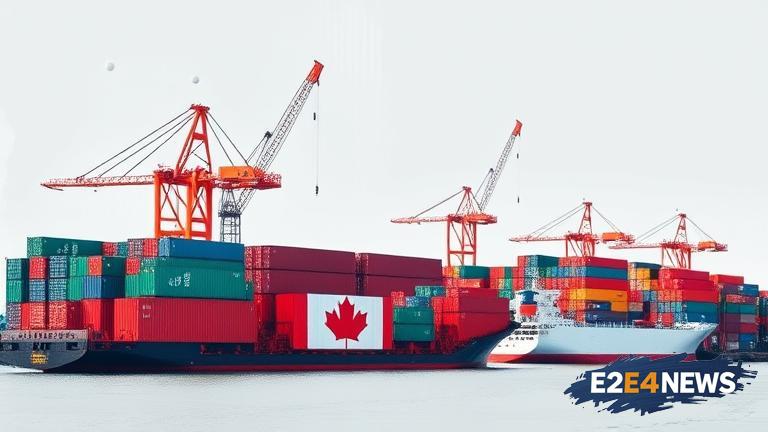Canada’s trade deficit expanded to $5.9 billion in June, marking a significant increase from the previous month’s deficit of $3.3 billion. The widening deficit was primarily driven by a decline in exports, which fell by 2.5% to $58.4 billion, and an increase in imports, which rose by 1.3% to $64.3 billion. The decline in exports was largely attributed to a decrease in shipments of energy products, particularly crude oil, which fell by 12.1% to $6.4 billion. Additionally, exports of motor vehicles and parts also declined, falling by 4.5% to $6.2 billion. On the other hand, imports of energy products increased by 10.5% to $4.3 billion, while imports of motor vehicles and parts rose by 2.5% to $8.1 billion. The trade deficit with the United States, Canada’s largest trading partner, widened to $4.4 billion in June, up from $2.6 billion in May. The deficit with countries other than the United States also increased, rising to $1.5 billion from $700 million in the previous month. The widening trade deficit is expected to have a negative impact on Canada’s economic growth, as a larger trade deficit can lead to a decrease in domestic demand and a reduction in economic output. Furthermore, the decline in exports and increase in imports may also lead to a decrease in employment and an increase in prices, which could further exacerbate the economic slowdown. The Canadian dollar also weakened against the US dollar, falling to a six-month low, which may make imports more expensive and further contribute to the trade deficit. The Bank of Canada has expressed concerns about the trade deficit and its impact on the economy, and has hinted at potential interest rate cuts to stimulate economic growth. However, some economists argue that the trade deficit is not a major concern, as it is largely driven by external factors such as global demand and trade policies. They also point out that Canada’s trade deficit is still relatively small compared to other developed economies. Nevertheless, the widening trade deficit is a significant concern for policymakers, as it can have far-reaching implications for the economy and the country’s competitiveness. In response to the trade deficit, the Canadian government has announced plans to increase funding for trade promotion and export development, in an effort to boost exports and reduce the trade deficit. The government has also launched initiatives to diversify Canada’s trade relationships and reduce dependence on the US market. Additionally, the government has implemented policies to support the development of key sectors such as energy, manufacturing, and agriculture, which are critical to Canada’s trade performance. Despite these efforts, the trade deficit is expected to remain a challenge for Canada in the coming months, as global trade tensions and uncertainty continue to weigh on the economy. The trade deficit has also sparked debate about the impact of trade agreements such as the USMCA and the potential benefits and drawbacks of free trade. Some argue that free trade agreements have led to an increase in trade deficits, while others argue that they have created new opportunities for Canadian businesses and boosted economic growth. As the trade deficit continues to widen, it is likely that the debate will intensify, with policymakers and economists weighing in on the best course of action to address the issue. In conclusion, Canada’s trade deficit expanded to $5.9 billion in June, driven by a decline in exports and an increase in imports. The widening deficit is a significant concern for policymakers, as it can have far-reaching implications for the economy and the country’s competitiveness. While the government has announced plans to boost exports and reduce the trade deficit, the issue is likely to remain a challenge in the coming months, as global trade tensions and uncertainty continue to weigh on the economy.
